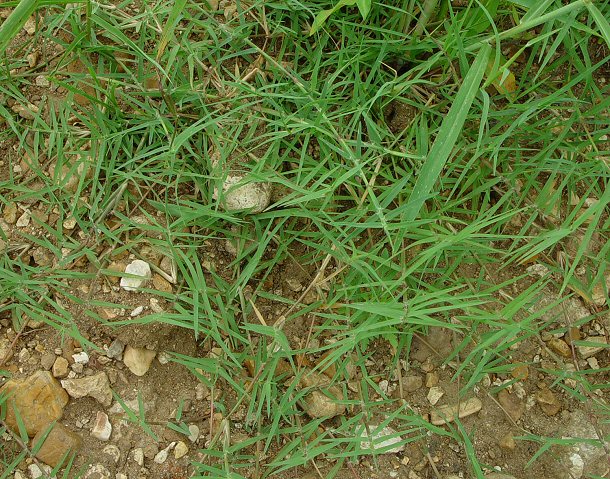Cynodon dactylon (L.) Pers.
Bermuda Grass

Introduced
CC = *
CW = 3
MOC = 31
© DETenaglia
Cynodon dactylon (L.) Pers.Bermuda Grass | |
 |
Introduced CC = * CW = 3 MOC = 31 |
© DETenaglia |
|
Family - Poaceae/Cynodonteae Stems - Creeping, to 40cm long, glabrous, terete, mat-forming, from rhizomes and stolons. Perennial. Leaves - Leaf blades to 8cm long, 4mm broad, flat to slightly keeled, pubescent toward the base. Sheaths slightly keeled, pubescent at the apex and along the apical margins. Ligule a short membrane with a ciliate apex.
Inflorescence - Palmate arrangement of 2-6 spikes. Spikes to -8cm long, with many spikelets. Spikelets appressed into 2 rows along the axis.
Flowers - Spikelets with 1 perfect floret. Glumes to 2mm long, lanceolate, acute at the apex. Lower glume slightly smaller than the upper. Lemmas to 2.8mm long, 3-nerved, acute, pubescent or scabrous on the nerves. Anthers to 1.3mm long, tan to yellow. Styles purple.
Flowering - June - October. Habitat - Pastures, fields, waste ground, disturbed sites, roadsides, railroads. Origin - Native to Africa (?) Other info. - This weedy species can be found mainly in the southern half of Missouri. The grass, commonly called "Bermuda Grass", is widely cultivated in the southern U.S. and is an introduced weed in most of the warmer regions of the world. Photographs taken in Van Buren, MO., 7-18-03. |